PRUNING HYDRANGEA
Get hip. Hydrangeas are all the rage these days. If you do have a plant or plants, you may have to prune them. But hydrangea isn’t just one kind of plants; a number of species are popular. Before you approach your hydrangea or hydrangeas, pruning shears in hand, you’ve got to know what species you are growing. They differ in their pruning needs.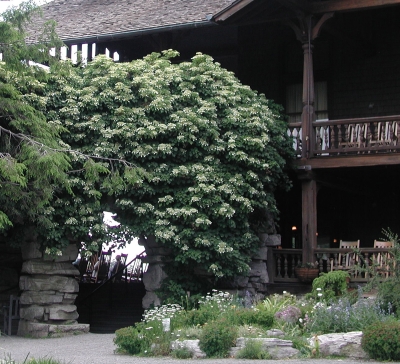
Adapting the text from my book, The Pruning Book, I’m going to give you a (figurative) hand by explaining how to identify each commonly grown species, and then guiding your hand holding the shears.
You’re Probably Growing…
If you grow just one hydrangea, I’ll bet that it’s Bigleaf Hydrangea (Hydrangea macrophylla). This species is most recognizable for sporting electric blue or lively pink flower heads, blue when the soil pH is below 5.5 and pink when the pH is above 6.5. You can choose your color by adding sulfur for more acidity or limestone for less. 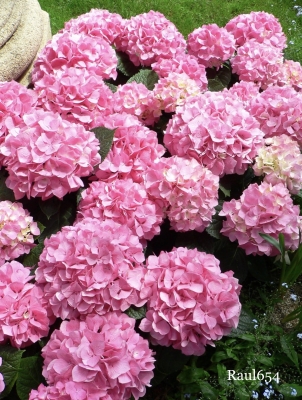
Bigleaf hydrangea develops its flower buds in late summer on into fall, and buds open in early summer. That is, unless a plant experiences a cold winter at the northern edge of its growing range (Zone 5), in which case flower buds are killed. The plant still grows well but doesn’t flower. Flower buds are formed the previous growing season at or near the ends of branches. Leave old, dry flowers on the plant for winter interest and to protect the coming season’s flower buds.
Come spring, cut stems that have flowered back to the fat flower buds. Or prune after flowering. Also thin out excess twiggy growth to let light and air into the bush. If in doubt about pruning this species, don’t.
Oakleaf hydrangea (H. quercifolia) is a large, spreading shrub bearing white flowers in early summer and, just as pretty, are the leaves, which are shaped like oak leaves. The flower clusters are cone shaped, often turning an attractive rust brown as they age. I wanted to grow this species but feared my cold winters would kill flower buds, in which case, as with Bigleaf Hydrangea, the plant would grow well, just not flower. Winters are warmer now, so I’ll probably plant this species.
Prune Oakleaf Hydrangea just like Bigleaf Hydrangea, unless you are more interested in the decorative leaves than the flowers. For leafy shoots rather than flowers, cut stems back by one-quarter in late spring. Oakleaf Hydrangea can grow quite large and spreading, and little or no pruning is fine also if the size is fine with you.
Easiest to Prune
Bigleaf and Oakleaf Hydrangea are the more difficult hydrangeas to prune. Now for some easy ones.
If your hydrangea produces large snowballs of white blossoms in late spring on new shoots, it’s Smooth (Hills-of-Snow) Hydrangea (H. arborescens). This botanical name always throws me off because “arborescens” means tree-like but the plant is most untree-like in the way it sends many succulent green shoots up from ground level each spring. And why “smooth” in the common name when this plant’s bark is textured and peeling?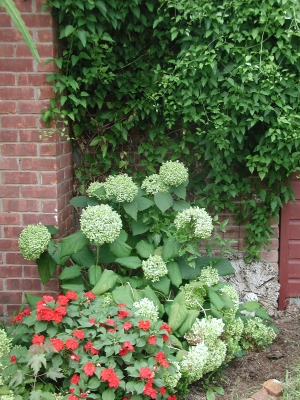
At any rate, pruning is easier than remembering its name. Just lop the whole plant to the ground just before growth begins in spring. It could have been done back in winter, even late fall, but I like to leave the large, round clusters of dried, small flowers on the plant all winter. For a second show of new flowers, prune low right after the first show ends.
Also easy to prune is PeeGee Hydrangea (H. paniculata ‘Grandiflora’), identifiable by its bearing flowers in mid to late summer. It’s a small tree eventually growing fifteen or more feet high with multiple woody trunks. Its flowers form on new shoots up in the plant so, in spring, cut back young shoots to the framework of older limbs, leaving just a few young buds per shoot. Little pruning is required.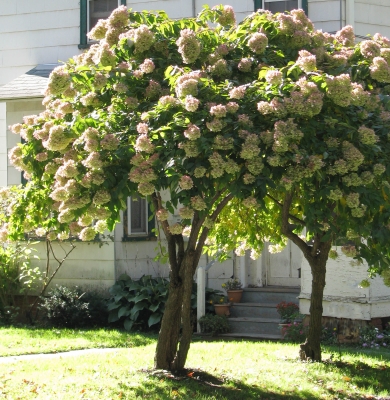
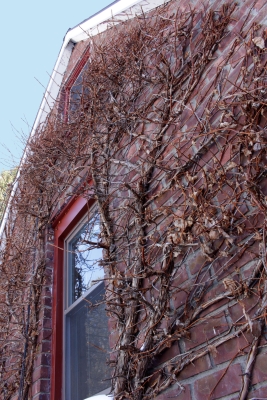
My favorite
And finally we come to what is my favorite hydrangea, Climbing Hydrangea (H. anomala subsp. petiolaris).
Anomala in the botanical name refers to a plant with a vining growth habit. This vine blankets the north side of my home and decorates it year ‘round. Right now, the vine is leafless with its stems and their coppery, peeling bark forming a mesh over the entire brick wall.
Leaves are soon to emerge on the short shoots that jut out from the wall, and those shoots will bear clusters of tiny, white flowers. The flowers sparkle against their darker leafy backdrop like stars in the night sky.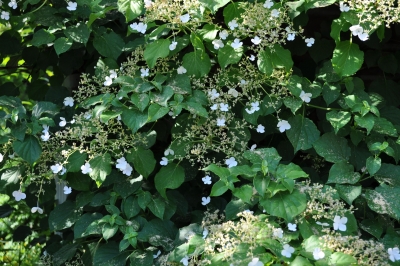
This vine needs little or no regular pruning — except that, left free to roam, it would engulf my whole house.  So twice during the growing season I gather up various types of pruners so I can reach far and wide to confine the vine to that one wall. I also shorten some of the jutting shoots after they finish flowering to keep them from inching further and further off the wall over the years. Growing up a tree or allowed to ramble over the ground, Climbing Hydrangea needs no such restraint.
So twice during the growing season I gather up various types of pruners so I can reach far and wide to confine the vine to that one wall. I also shorten some of the jutting shoots after they finish flowering to keep them from inching further and further off the wall over the years. Growing up a tree or allowed to ramble over the ground, Climbing Hydrangea needs no such restraint.
So there you have it. Plant one of some species of hydrangea or identify what you already have. Then prune it, as needed, which it might not need.

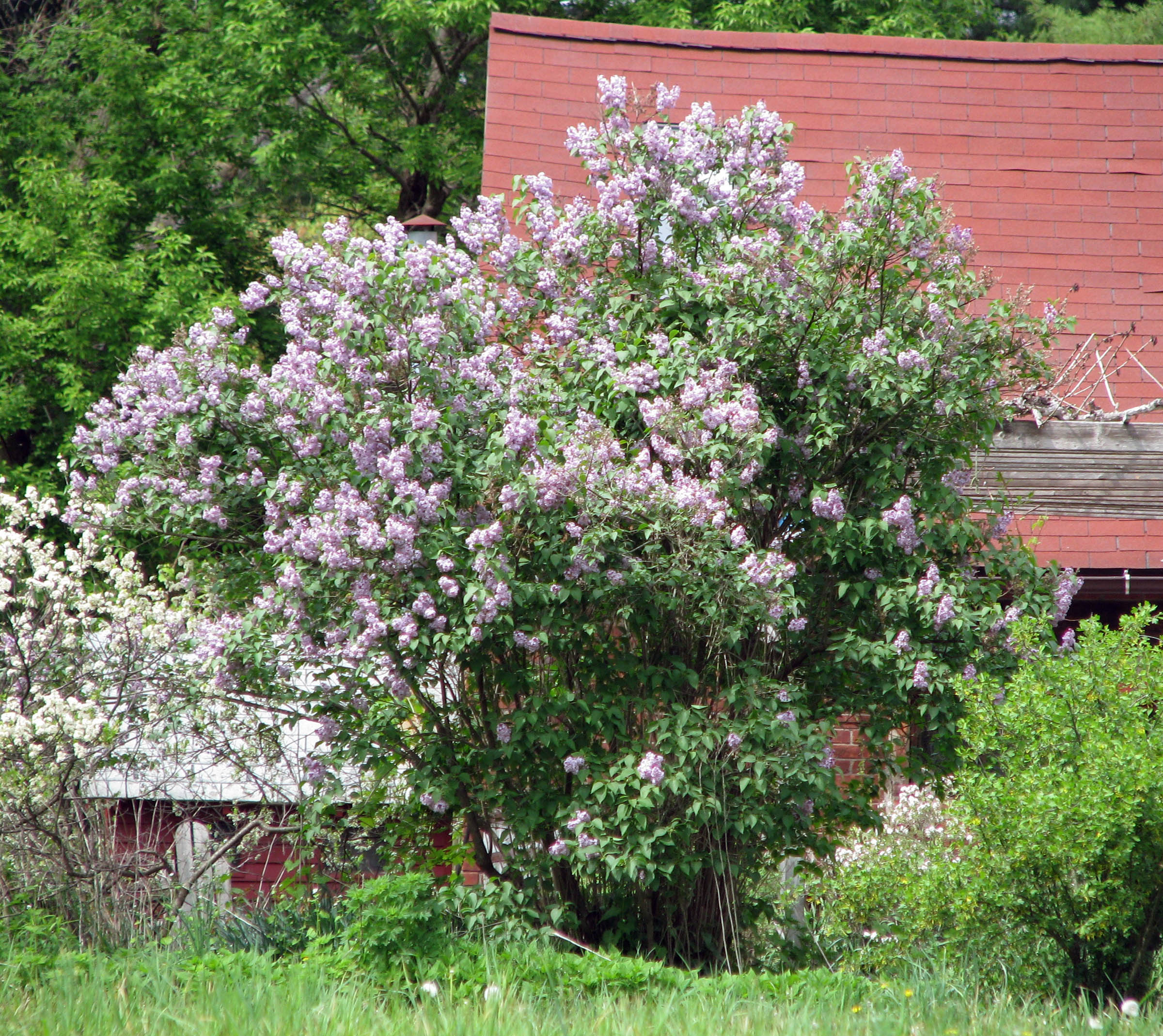


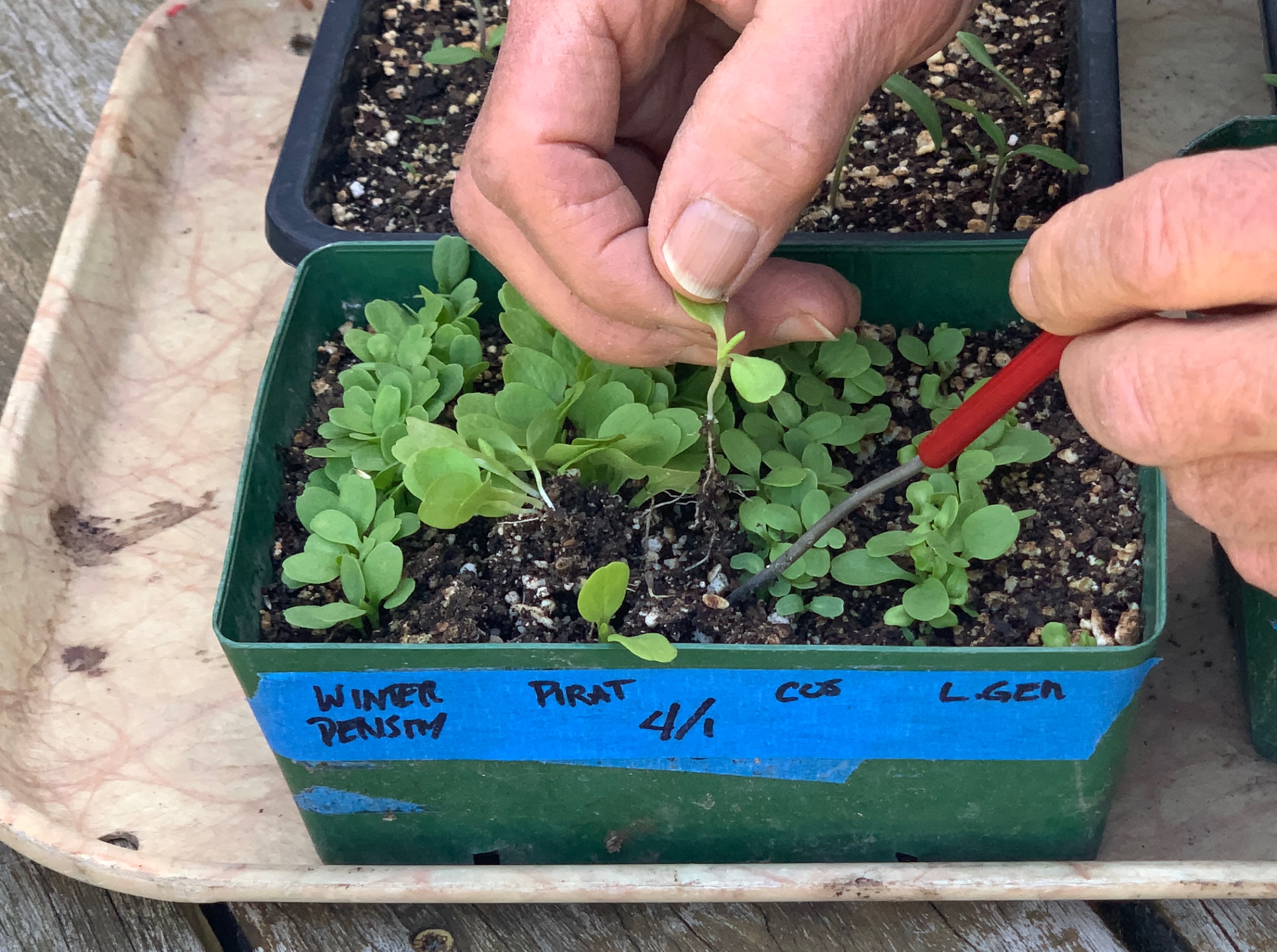
Little wonder that Climbing Hydrangea is your favorite. What a magnificent plant!
Yes!!!!!!
Hi Lee,
How much sun does a vining hydrangea need?
It can grow well in part shade or full sun.
Can you hard prune a hydrangea vine. Mine was on a trellis and was left on its own. It is huge and broke the trellis and im trying to save it but think I need to give it a hard prune to get it on a new support. Thank you
I assume you mean climbing hydrangea, one of my favorite plants. Yes, you could hard prune it. It won’t bloom for a year or two, but will regrow vigorously.